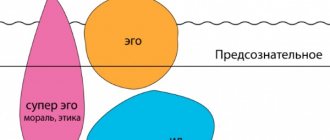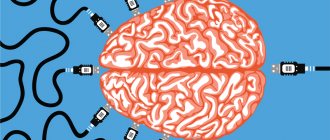Behaviorism (English: behavior) is a branch of psychology that studies the behavior of living beings and ways to influence it. In a narrower sense, this science studies external behavior, without making a distinction between humans and animals.
The classical behaviorism of J. Watson reduces psychological manifestations to the body's response to motor ones. Thinking comes down to a speech act, and emotions to internal changes in the body. Consciousness is fundamentally not included in the list of studies of behaviorism. Because it does not depict behavioral indicators. The main feature of behavior is the connection between stimulus and response (S – R).
Behaviorism in psychology
Behaviorism defined the external character of twentieth-century American psychology. The founder of behaviorist doctrine, John Watson, formulated its basic principles.
Behaviorism, the subject of study according to Watson, studies the behavior of subjects. This is where the name of this current of psychology comes from (behavior means behavior).
Behaviorism in psychology is briefly a doctrine of behavior, the analysis of which is exclusively objective and limited to externally observed reactions. Watson believed that everything that happens in the inner world of an individual is impossible to study. But only reactions, external activity of the individual and stimuli that are determined by such reactions can be objectively studied and recorded. He considered the task of psychology to be the identification of a potential stimulus by reactions, and the prediction of a certain reaction by motivation.
Behaviorism The subject of study is human behavior from its birth to the natural end of life. Behavioral acts can be viewed similarly to the objects of study in other natural sciences. The same general techniques that are used in the natural sciences can be applied in behavioral psychology. And since, in an objective study of personality, a supporter of the behavioristic theory does not observe anything that could be correlated with consciousness, sensation, will, or imagination, he can no longer consider that the listed terms indicate real phenomena of psychology. Hence, behaviorists put forward the hypothesis that all of the above concepts must be excluded from describing the activities of the individual. These concepts continued to be used by “old” psychology due to the fact that it began with Wundt and grew out of philosophical science, which, in turn, grew out of religion. Thus, this terminology was used because all psychological science at the time of the advent of behaviorism was considered vitalistic.
Learning behaviorism has its own task, which lies in the accumulation of observations of human behavior in order for the behaviorist in each specific situation with a certain stimulus to be able to anticipate the individual’s reaction or, conversely, to determine the situation if the reaction to it is known. Therefore, with such a wide range of tasks, behaviorism is still quite far from the goal. However, although the task is quite difficult, it is possible. Although many scientists considered this task unsolvable and even absurd. Meanwhile, society is based on total confidence that the behavioral acts of individuals can be anticipated in advance, as a result of which it is possible to create circumstances that provoke certain types of behavioral reactions.
The temple of God, school, marriage - all these are social institutions that arose in the process of evolutionary-historical development, but they could not exist if it was impossible to anticipate human behavior. Society would not exist if it were not able to form such circumstances that would influence certain subjects and direct their actions along strictly established paths. Until now, the generalizations of behaviorists have been based mainly on haphazardly used methods of social influence.
Supporters of behaviorism hope to conquer this area as well, and then subject individuals and social groups to scientific, experimental, reliable study.
The school of behaviorism, in other words, strives to become a laboratory of society. A condition that makes behaviorist research difficult is that incentives that do not initially provoke any response may later provoke one. This process is called conditioning (previously this process was called habit formation). Due to such difficulties, behaviorists had to resort to genetic techniques. A newborn baby has a so-called physiological system of innate reactions or reflexes.
Behaviorists, based on a variety of unconditional, unlearned reactions, try to transform them into conditioned ones. At the same time, it is discovered that the number of complex unconditioned reactions that arise at birth or shortly after it is relatively small, which refutes the theory of instinct. Most of the complex acts that old-school psychologists called instincts, such as climbing or fighting, are today considered conditioned. In other words, behaviorists are not looking for more information confirming the existence of hereditary types of behavioral reactions, as well as the presence of hereditary special abilities (for example, musical ones). They believe that given the existence of relatively few innate actions, which are approximately the same in all children, and in conditions of comprehension of the external and internal environment, it becomes possible to direct the development of any baby along a strictly defined path.
The concepts of behaviorism viewed the personality of individuals as a set of behavioral reactions characteristic of a particular subject. Hence, the leading concept in the concept of behaviorism was the “stimulus S (impulse) – reaction R” scheme. Thorndike even derived the law of effect, which states that the connection between incentive and response is strengthened by the presence of a reinforcing stimulus. A reinforcing stimulus can be positive, such as praise or a monetary reward, or negative, such as punishment. Often human behavior is driven by the expectation of positive reinforcement, but sometimes the desire to avoid exposure to a negative reinforcer may prevail.
The concepts of behaviorism, therefore, state that personality is everything that a subject possesses and his potential to respond in order to adapt to the environment. In other words, a personality is an organized structure and a relatively stable system of all kinds of skills.
Behaviorism in psychology can be summarized using Tolman's theory. The individual in the concept of behaviorism is, first of all, considered as a responsive, functioning, learning creature, programmed to produce various types of actions, reactions and behavior. By modifying incentives and reinforcing motives, individuals can be programmed to perform the desired behavior.
Psychologist Tolman proposed cognitive behaviorism, thereby criticizing the S->R formula. He considered this scheme to be too simplified, as a result of which he added to the formula between stimulus and response the most important variable - I, which denotes the mental processes of a particular subject, depending on his physical condition, experience, heredity and the nature of the stimulus. He presented the scheme as follows: S->I->R.
Later, Skinner, continuing to develop learning behaviorism, provided evidence that any behavioral reactions of an individual are determined by consequences, as a result of which he derived the concept of operant behavior, which was based on the fact that the reactions of living organisms are entirely determined by the results to which they lead. A living being exhibits a tendency to repeat a certain behavioral act or to attribute absolutely no meaning to it, or even to avoid repeating it in the future, depending on whether the consequences are pleasant, unpleasant, or indifferent. Consequently, the individual is entirely dependent on circumstances, and any freedom of maneuver that he may have is a pure illusion.
The current of social behaviorism appeared in the early seventies. Bandura believed that the key factor that influenced an individual and made him what he is today is associated with the tendency of subjects to copy the behavior of those around them. At the same time, they evaluate and take into account how favorable the consequences of such imitation will be for them. Thus, a person is influenced not only by external circumstances, but also by the consequences of his own behavior, which he independently evaluates.
In accordance with D. Rotter’s theory, social behavioral reactions can be displayed using the concepts:
— behavioral potential, that is, each individual has a certain set of functions, behavioral acts that were formed throughout life;
- individuals' behavior is influenced by subjective probability (in other words, what they think a certain reinforcing stimulus will be after a certain behavioral act in certain circumstances);
— the behavior of individuals is influenced by the nature of the reinforcing stimulus, its significance for the person (for example, for some, praise is more valuable, and for others, material reward);
— an individual’s behavior is influenced by his locus of control, that is, he feels like a so-called “puppet” in someone else’s performance or believes that achieving his own goals depends only on his own efforts.
According to Rotter, behavioral potential contains five core blocks of behavioral response:
— behavioral acts are aimed at achieving success;
- adaptive behavioral acts;
- defensive behavioral acts (for example, denial, suppression of desires, devaluation);
- avoidance (for example, withdrawal);
- aggressive behavioral acts - either real physical aggression or its symbolic forms, such as mockery directed against the interests of the interlocutor.
Behaviorism, despite many shortcomings of this concept, continues to occupy a significant place in psychological science.
Human conditioning
After studying Pavlov's work, J. B. Watson concluded that studies of animal conditioning provided the key to the study of human behavior.
Watson's idea, as well as all behavioral psychology, is that conditioned reflexes are the basis of human behavior in all life situations.
Examples of human conditioning
To confirm his hypothesis, Watson, together with R. Rayner, conducted one of the most unethical experiments in the history of psychology in 1920 (details here). Researchers tried to instill a fear of rats in an 11-month-old baby named Albert.
They did research: before the experiment, Albert was a fairly calm child. Early on, Watson and Rayner gave him a white rat to play with. Albert looked delighted and showed no fear.
After making sure that little Albert was not afraid of rats, the researchers began making loud noises every time they gave a rat to the child. The surprised Albert began to cry at such moments.
Then Albert began to cry and tremble even at the sight of the rat. Thus, the rat, which was a neutral stimulus, became a conditioned fear stimulus.
Additionally, the fear of the white rat has spread to other furry and white objects such as white rabbits, Santa's beard, cotton, etc.
Behavioral theory
By the end of the nineteenth century, many flaws were revealed in the core method of studying the human psyche, introspection. The main one of these shortcomings was the lack of objective measurements, as a result of which there was fragmentation of the information received. Therefore, against the background of the current situation, the school of behaviorism is emerging, aimed at studying behavioral reactions as an objective mental phenomenon.
American supporters of behaviorism built their works based on the ideas of studying behavioral acts by Russian researchers I. Pavlov and V. Bekhterev. They accepted their views as a model of accurate natural scientific information. Such fundamental views, under the influence of the ideas of positivism, were modified into another line of research into behavioral acts, which was expressed in the extreme concepts of behaviorism:
- reducing behavioral acts to a strictly determined connection of external motivation, recorded at the “input”, with a response observable reaction, recorded at the “output”;
— proving that such a relationship is a single equivalent object of scientific psychology;
- no need for additional intermediate variables.
Behaviorism representatives and main ideas.
Particular merit in this direction belongs to V. Bekhterev, who put forward the concept of “collective reflexology,” which includes behavioral acts of groups, behavioral reactions of an individual in a group, conditions for the emergence of social groups, the specifics of their activities and the relationships of their members. Such an understanding of the concept of collective reflexology was portrayed by him as overcoming subjective social psychology, since all problems of groups are understood as a correlation of external influences with facial-somatic acts and motor reactions of their participants. Such a socio-psychological approach must be ensured by a combination of the principles of reflexology (tools for uniting individuals into groups) and sociology (the specifics of groups and their relationships with society). Bekhterev insisted on the concept of “collective reflexology” instead of the commonly used concept of social psychology.
V. Bekhterev's theory of behaviorism contained an extremely useful idea - a group is a whole in which new properties arise that are possible only through the interaction of individuals. However, such interactions were interpreted quite mechanistically, that is, the personality was proclaimed to be a product of society, but the core of its formation was based on biological characteristics and, mainly, social instincts, and the norms of the inorganic world (for example, the law of gravity) were used to interpret the social connections of individuals. However, the very idea of biological reduction was criticized. Despite this, V. Bekhterev’s contribution was enormous to the further formation of social psychology.
The British psychologist Eysenck is the creator of the factor personality theory in behaviorism. He began research into basic personality traits by studying the results of a psychiatric examination of a contingent of healthy individuals and those recognized as neurotic, which included descriptions of psychiatric symptoms. As a result of this analysis, Eysenck identified 39 variables in which these groups differed strikingly, and the factorial study of which made it possible to obtain four criteria, including the criterion of stability, extraversion-introversion and neuroticism. Eysenck gave a different meaning to the terms introvert and extrovert proposed by C. Jung.
The result of further study through factor analysis by Eysenck was the development of the “three factor concept of personality.”
This concept is based on the establishment of a personality trait as an instrument of behavior in certain areas of life. Isolated actions in extraordinary situations are considered at the lowest level of analysis; at the next level, often reproducible, habitual behavioral reactions in essentially similar life situations are considered; these are typical reactions diagnosed as superficial traits. At the next third level of analysis, it is discovered that frequently reproduced forms of behavioral response can be combined into certain uniquely defined aggregates, rich in content, first-order factors. At the next level of analysis, meaningfully defined aggregates themselves are combined into second-order factors, or types, that do not have obvious behavioral expression, but are based on biological parameters. At the stage of second-order factors, Eysenck identified three dimensions of personal properties: extraversion, psychoticism and neuroticism, which he considers as genetically determined by the activity of the nervous system, which demonstrates them as temperamental traits.
Punishment and behavioral psychology
If conditioning can be effective in changing or creating new behavior, can it also be used to aggressively suppress unwanted behavior?
Sometimes it happens that depending on the circumstances, support alone is not enough, and punishment is also necessary. For example, if a child hits one of his friends, or if he climbs into something he doesn’t want (gas stove, washing machine).
In these cases, punishment can be effective. However, the reprimand must be given immediately (sometimes a simple “no!” may be enough).
When can punishment be harmful?
A harsh reprimand can have negative consequences if it is too harsh or unjustified. Here are the main risks associated with punishment:
- There is no connection with good behavior.
Punishment makes the punished person understand that his behavior is inappropriate. But if there are no clear rules on how to behave, then punishment does not lead to the formation of better behavior.
- Temporary effect.
The consequences of a reprimand are often short-lived and highly dependent on the person imposing the punishment.
- Negative emotions of a person being punished.
The person who has been reprimanded may react with fear or anger. He may begin to fear or even hate the person who punished him or the place where he was punished.
- Delay between action and reprimand.
If punishment does not immediately follow reprehensible behavior, it will not be beneficial. In everyday life it is often difficult to react instantly.
Thus, the distinction between the positive and negative effects of punishment is quite fragile.
This fuels a debate about child-rearing practices: Should we punish them?
Directions of behaviorism
Classical behaviorism is the behaviorism of D. Watson, which studies exclusively externally manifested behavioral reactions and does not see the difference between the behavioral acts of individuals and other living creatures. In classical behaviorism, all mental phenomena are reduced to the body’s response, mainly motor. Thus, thinking in behaviorism was identified with speech and motor actions, emotions - with transformations within the body. Consciousness in this concept has not been fundamentally studied, due to the fact that it does not have behavioral indicators. The main tool of behavioral reactions in the concept is the relationship between incentive stimulus and response.
The main methods of behaviorism are observation and experimental study of the body's response to the influence of environmental circumstances in order to detect correlations between these variables that can be mathematically displayed. The mission of behaviorism was considered to be the translation of the abstract fantasies of followers of humanitarian theories into the language of scientific observation.
The behavioristic direction was born as a result of the protest of its supporters against the arbitrary abstract speculations of scientists who do not define terms in a clear way and interpret behavioral acts exclusively metaphorically, without translating colorful explanations into clear instructions - what exactly needs to be done in order to get the necessary modification in behavior from others or oneself .
In practical psychology, the behavioristic direction became the founder of the behavioral approach, in which the behavioral acts of individuals are the focus of the specialist. More specifically, “what is in behavior,” “what does the individual want to change in behavior,” and “what specifically needs to be done for this purpose.” After some time, it became necessary to distinguish between the behavioral approach and the behavioral direction.
In practical psychology, the behavioral direction is an approach that implements the ideas of classical behaviorism, in other words, it works, first of all, with the externally manifested, observable behavioral reactions of the individual and considers the personality only as an object of influence in perfect analogy with the scientific-natural approach. But still, the behavioral approach has a much wider range. It covers not only the behavioral direction, but also cognitive behaviorism, and the personal-behavioral direction, where a specialist considers a person as the author of external and internal behavioral acts (thoughts, emotions, choosing a life role or choosing a certain position), that is, any actions whose producer is she and for which she will be responsible. The weakness of behaviorism lies in the reduction of multidimensional processes and phenomena to the activities of people.
The crisis of behaviorism was resolved by introducing an additional variable into the classical scheme. Thanks to this, supporters of the concept began to believe that not everything can be fixed by objectivist methods. The drive functions only in conjunction with an intermediate variable.
Like any theories, behaviorism was subject to modifications in the process of its own development. Thus, new directions emerged: neobehaviorism and social behaviorism. The latter studies the aggression of individuals. Supporters of social behaviorism believe that an individual makes a lot of efforts in order to achieve a certain status in society. The concept of behaviorism in this direction is a mechanism of socialization, providing not only for the acquisition of experience based on one’s own mistakes, but also on the mistakes of others. The foundations of cooperative and aggressive behavioral acts are formed on this mechanism.
Neobehaviorism does not set itself the task of personal education, but directs efforts at “programming” the behavioral acts of an individual in order to achieve the most effective result for the client. The importance of positive reinforcement has been confirmed in research by the practice of the “carrot method.” When exposed to a positive incentive, the greatest results can be achieved. Conducting his own research, Skinner repeatedly found himself in trouble, but he believed that if behavioral science could not find an answer to a question, then such an answer simply did not exist at all.
Behaviorism Skinner considered human behavior to be determined by external conditions of influence (motives, experience, observation), as a result of which he excluded the ability to self-government.
The central mistakes of the followers of behavioristic teaching lie in completely ignoring the individual. They did not understand that the study of any action without reference to a specific person is impossible. They also did not take into account that different individuals under equal conditions may develop several reactions, and the choice of the optimal one will always remain with the individual.
Supporters of behaviorism argued that in psychology any “respect” is built only on fear, which is very far from the truth.
Despite the fact that over the past 60 years there has been a serious modification of the ideas of behaviorism proposed by Watson, the basic principles of this school have remained unchanged. These include the idea of the predominantly non-innate nature of the psyche (however, today the presence of innate components is recognized), the idea of the need to study mainly behavioral reactions accessible to analysis and observation (despite the fact that the meaning of internal variables and their content is not denied) and confidence in the ability to influence the course of mental development with a number of developed technologies. Conviction in the need and possibility of targeted training, forming a certain personal type and methods that carry out the learning process, are considered one of the most significant advantages of this direction. Various learning theories and trainings that make it possible to correct behavioral reactions have ensured the vitality of behaviorism not only in the United States, but also its spread in the rest of the world, but this school has not received wide recognition in Europe.
Behaviorism and animal experimentation
To implement this concept and apply it to the study of human behavior, behavioral psychology uses a method first tested on animals.
E. L. Thorndike made enormous contributions to the study of animal behavior. His works still play a big role, including in the psychology of human behavior.
Thorndike discovered two main phenomena:
- Animals learn only by trial and error;
- During the course of research, a gradual reduction in unwanted behavior occurs in all animal species. Thorndike produced the same training schedule every time, regardless of which animal was studied.
Later, based on these studies, Watson came to the conclusion that using methods of studying animal psychology, it is possible to create laws that predict and control human behavior.
But the goal of behavioral psychology is not only to control behavior, but also to “create” it.
Pavlov's research
The most prominent studies on the formation of new behavior were and remain the works of I.P. Pavlov's dog conditioning.
Since 1914, Watson (the founder of behaviorism) began to be interested in the works of I.P. Pavlov on conditioning canine reflexes. Indeed, during his work, Pavlov established a whole set of laws about conditioning.
Conditioning is a form of relationship between a stimulus and a reflex (behavior).
It was Pavlov who discovered this phenomenon. In his research, he noticed that the smell of food, the sight of food, or even the sight of the person who usually brought the food was enough to cause dogs to salivate.
Pavlov called this phenomenon a conditioned reflex (or conditioned response), that is, a reflex that depends on environmental conditions.
Behavioral psychology - books
We offer you a list of 4 books that reveal the phenomenon of human behavior.
1. “Coping behavior. Current state and prospects” - a team of authors.
The book is addressed to a wide range of specialists interested in the adaptive capabilities of a person faced with difficult life situations.
2. “How to find the key to solving any situation. 30 rules for effective communication, conflict resolution, behavior management” - Larisa Bolshakova.
This book contains thirty new psychological techniques. How to avoid a conflict situation and find a compromise? How to find a key to any person? What to do to overcome aggression? And much more!
3. “Organizational behavior” - Lyudmila Zgonnik.
The book examines the essence of organizational behavior, various aspects of managing the behavior of individuals and groups in an organization.
4. “The power of habit. Why we live and work this way and not otherwise” - Charles Duhig.
Duhigg's observations and discoveries greatly complement and develop the ideas of Nobel Prize-winning economist Daniel Kahneman, author of the best-selling book Thinking Slow...Fast.
The book is recommended for reading to everyone who is working on themselves and wants to change their life!











